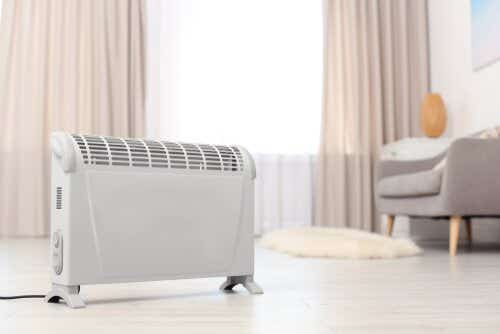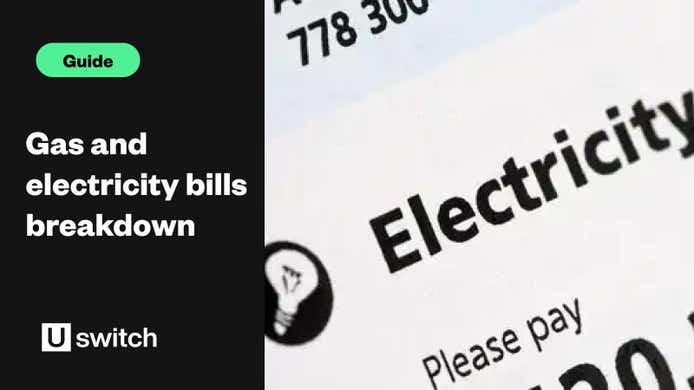What are the different types of energy-efficient heater?
Heaters fall into two main categories, with some being more energy-efficient than others:
- Portable heaters - including electric heaters, also known as space heaters, and heaters fuelled by bottled gas.
- Fixed heaters - such as wall-mounted electric heaters, fireplaces and wood-burning stoves. They can be powered by mains gas, LPG (liquid petroleum gas), electricity or solid fuels including coal, wood and biomass, based on organic matter.
What's the most efficient electric heater?
Portable electric heaters are almost 100% energy-efficient, converting nearly all energy into heat, which means they're at the top of the list of efficient electric heaters. However, they’re designed for small spaces and not a substitute for an efficient central heating system.
The running costs of an electric heater depend on your tariff. If you’re paying a standard variable tariff, the amount you pay is determined by Ofgem’s energy price cap, which changes every three months. If you’re on a fixed tariff, you could pay more or less, depending on your deal.
Your heater’s power is measured in kilowatts (kW) and running costs are usually calculated by the hour (kWh). To heat a small or medium-sized room, a 2kW electric heater is usually enough.
How much does it cost to run an electric heater?
To work out the cost of running an electric heater, do the following:
- Divide the wattage of the electric heater by 1,000 to get the kilowatts - e.g. 2,000W is 2kW.
- Multiply the kW by the hours you’ve been using it, so running a 2kW electric heater for 2 hours is 4kWh.
- Multiply the kWh by the current energy price cap (the electricity unit rate under the price cap from 1 April to 30 June 2025 is 27.03p) - e.g. 4kWh x 27.03p = £1.08.
In this example, then, it will cost you just over £1 to run a 2kW electric heater for two hours.
Portable electric heaters
There are four main types of portable electric heaters: oil-filled radiators, convector heaters, fan heaters and halogen heaters.
They don’t vary much in terms of energy efficiency, but given that electric heating devices use electricity, they’re less cost-effective than central heating systems running on gas or oil.
Standard prices vary depending on their size, style and features - for example smart connectivity - so you can operate your electric heater remotely.
- Oil-filled radiators aren't suitable with children or vulnerable people around as they get hot to the touch. They take a while to heat up, but they’re also slow to cool so you feel the warmth for longer.
- Convector heaters circulate air through the appliance and are usually powerful and silent, but they take time to warm up and can lose heat to draughts.
- Fan heaters draw in air and blow it over a heating element. They are good for short blasts as they can use up a lot of electricity, and they require space around them to operate safely. Fan heaters with ceramic elements are usually more energy efficient.
- Halogen heaters are a compact space-saving option. They also heat up and cool down quickly.
Standalone electric heaters tend to be more energy efficient if they have thermostatic controls. This means they switch off when they reach a set temperature. For an energy-saving upgrade, buy a separate plug-in thermostat if your electric heater hasn’t got one.
Portable bottled gas heaters
Portable bottle gas heaters are quite bulky and heavy to lift. You also need an open window nearby for ventilation due to the fumes released by bottled gas. This makes it less energy efficient. Plus, there’s the additional cost of refilling or exchanging the gas bottles.
Avoid using gas heaters in rooms that contain flammable or combustible materials, for example bedrooms and bathrooms.
Fixed electric heaters
An energy-saving heater that stays in one place, fixed electric heaters are available for most of the main heating fuels. However, they’re still more expensive to run than central heating systems.
There are different kinds of fixed heaters available, including:
- Wall panel convection heaters, often used to supplement storage heaters
- Electric wall fan heaters, often used in bathrooms to blow the heat downwards.
Gas fires and fixed gas heaters
These energy-saving heaters are a reliable option for halls, stairwells and kitchens where there’s an outside wall close by. They run on either natural gas, propane, or butane, so fitting a carbon monoxide alarm nearby is also a good idea.
Gas heaters are cheaper to run than electric heaters. In fact, modern gas heaters with central flues can rival central heating in certain spaces.
Gas-fired heater options include:
- Open flame
- Radiant
- Glass-fronted
- Flueless (catalyst), which doesn't need to be connected to a flue pipe or chimney, making installation easier.
Solid fuel fires (including wood-burning stoves)
Solid fuel fires like wood-burning stoves are a popular energy-saving heating option.
Coal is also a popular choice and it has a much higher density than wood so it delivers more heat.
If you live in a smoke control area, certain solid fuels can only be burnt on 'exempt appliances'. This exemption includes many stoves that burn wood and coal-based solid fuels because they’re generally enclosed and glass-fronted. They also burn fuel more efficiently.
How to keep the heat generated by energy-efficient heaters inside
Once you’ve got the heat from your energy-efficient heater, there are some simple ways to make sure it stays inside. Back-up your energy-saving heating devices by adding:
For other ways to keep your home warm without spending any money, find 100+ energy-saving tips for your home here.



